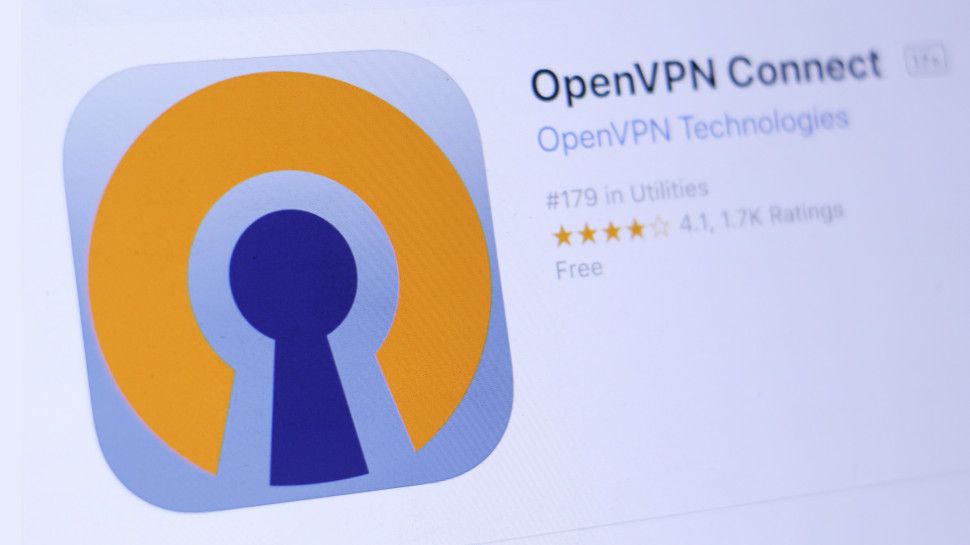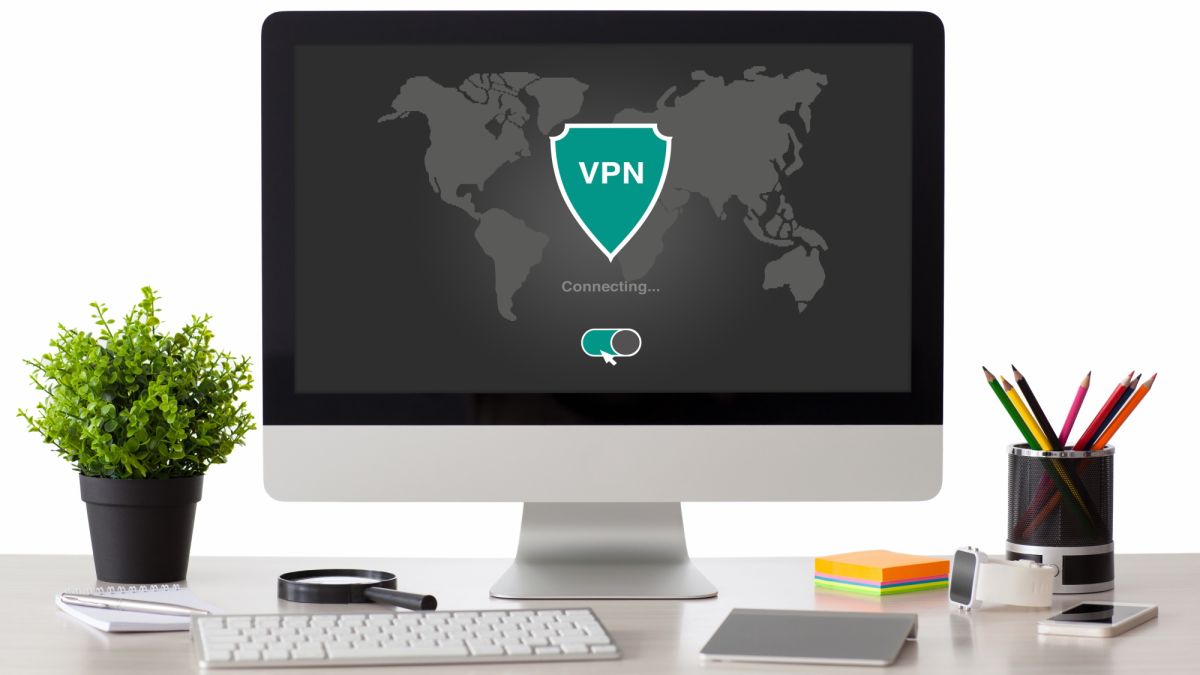Most VPN apps make it straightforward to make use of the OpenVPN protocol. Select it from a Protocols record on the Settings web page and that is it, the app units up OpenVPN routinely, each time you join, and you do not have to care about any of the low-level technical particulars.
Besides, effectively, generally you would possibly care. Ever puzzled if a VPN actually is supplying you with the 256-bit encryption it is marketed, as an illustration? The app might not clearly let you know, however for those who can determine the place to look, particularly on desktops, there are different methods to search out out.
Perhaps you are on the lookout for extra particulars on the connection. What is the identify or IP handle of the server your app is attempting to achieve? If the app would not offer you a alternative of UDP or TCP connections, what’s it utilizing by default? Is the supplier actually utilizing its personal DNS server, or simply redirecting you to a public service? It would take a couple of minutes of detective work with Job Supervisor and different instruments, however there could also be methods you will discover out.
And if an OpenVPN connection fails, understanding why is commonly an actual problem as app error messages might be deceptive. However peeking below the OpenVPN hood can usually provide the reply, and on this article we’ll clarify precisely what it’s worthwhile to do.
How does OpenVPN join?
Once you hit your VPN’s Join button, it is simple to imagine the app then creates, manages and finally closes the OpenVPN connection for you. However the actuality is slightly totally different.
What really occurs is the VPN app appears on the location you’ve got chosen, your app settings, and anything which defines how the connection ought to work. Then it often saves these settings to a file, and passes them to a command line app from the official OpenVPN mission. It is this app that units up the connection and handles all of the tough low-level stuff.
You would possibly be capable of discover this OpenVPN file in your VPN app folders. It is usually referred to as openvpn.exe, and, for instance, by default the ExpressVPN Home windows app has a replica in its C:Program Information (x86)ExpressVPNexpressvpndwindows folder.
Some suppliers construct a particular model of the file or simply rename it. NordVPN has 32 and 64-bit openvpn-nordvpn.exe recordsdata in its C:Program FilesNordVPN[version]ResourcesBinaries folders, as an illustration, and Turbo VPN consists of vpncore.exe in its C:Program Information (x86)TurboVPNDriver32 folder. If you happen to’re not sure, right-click the file, choose Properties, Particulars, and you must see it is copyrighted ‘OpenVPN Venture’ and initially referred to as OpenVPN.exe.
Why does this matter? The VPN app passes the settings to OpenVPN utilizing normal instructions, and if you will discover them, they’re going to offer you each element in regards to the connection and the way it’s arrange.
OpenVPN: below the hood
To search out out extra about OpenVPN connections on a PC, first make an OpenVPN connection to any location along with your VPN app. Then launch Job Supervisor (press Ctrl+Left Shift+Esc), click on the Particulars tab and search for your VPN’s OpenVPN course of. (Click on Extra Particulars if Job Supervisor shows its Compact view.)
Now scan throughout the method’s columns till you discover its Command Line. If you happen to do not see it, right-click a column header, select Choose Columns, and verify the ‘Command Line’ field.
That is how our ExpressVPN app’s command line pointed OpenVPN to its .ovpn setup file, with the settings we wanted:
“C:Program Information (x86)ExpressVPNexpressvpndwindowsopenvpn.exe” –config C:ProgramDataExpressVPNv4configovpn921089config.ovpn
Here is how NordVPN advised OpenVPN about its openvpn-config file:
“C:Program FilesNordVPN6.38.15.0ResourcesBinaries64bitopenvpn-nordvpn.exe” –config “C:ProgramDataNordVPNconfigsopenvpn-config”
If you cannot see the command line in Job Supervisor, click on Search on the taskbar, sort CMD, select Home windows Command Processor and choose Run As Administrator. Then paste the command: wmic course of the place “identify like ‘%openvpn.exe%'” get processid,commandline into the command line (changing openvpn.exe with the identify of your supplier’s OpenVPN app) and press Enter.
If the command line features a path to a settings file, as we have seen above with ExpressVPN and NordVPN, then you possibly can open that in Notepad to see how your connection is about up. We’ll have a look at that subsequent.
Generally the app passes all of your setup particulars totally on the command line, with out utilizing any file. That is nonetheless sufficient to get some very helpful data.
Nonetheless cannot discover your supplier’s OpenVPN app, or see the command line particulars? Some VPN apps go the knowledge to OpenVPN in a approach customers cannot see. Pity, however not the top of the story, and we’ll offer you one other choice to attempt later.
Helpful OpenVPN settings
We’re assuming you’ve got discovered your OpenVPN settings, both in a file or on a command line. They’re designed for builders, so do not be shocked for those who’ve no concept what most of them imply. However do not be delay, both. Hold scanning down the record – a few of them are genuinely helpful.
If you happen to’re questioning what encryption your connection is utilizing, as an illustration, whether or not you are getting the marketed AES-256, search for a ‘cipher’ command. Our ExpressVPN file included the road ‘cipher AES-256-CBC‘, as an illustration, giving us AES-256 encryption utilizing Content material Block Chaining- precisely what we might anticipate.
Perhaps you are curious in regards to the IP or host identify of the VPN server, and your app would not let you know? Discover the ‘distant’ command. Our ExpressVPN file contained the road ‘distant 85.203.34.86 4283‘, giving us the IP handle of the VPN server and the connection port.
Some apps specify how the VPN connects on the finish of the distant command, by including ‘udp’ or ‘tcp.’
Is the app utilizing some third-party DNS server with out telling you? No issues with ExpressVPN, it solely ever makes use of its personal DNS. Test your settings for a command akin to ‘dhcp-option DNS 1.1.1.1‘, although, and run a seek for the IP handle to see which service the app is attempting to make use of. (This might be its personal DNS, but when it truly is 1.1.1.1, that is Cloudflare.)
If you happen to’re actually and wish to attempt to decipher the whole lot, the official OpenVPN guide has extra, although beware, you will want loads of time and data to determine all of it out.
OpenVPN logs
Understanding how your OpenVPN connection is about up might be attention-grabbing, however the true worth is available in any OpenVPN logs. Cannot log in, as an illustration? VPN apps would possibly simply offer you a normal ‘connection error’ message as they do not know any extra (they’re leaving OpenVpn.exe to determine the connection), however the OpenVPN logs are sometimes extra useful.
Generally the logs can be found from the VPN app. IPVanish’s Home windows providing has a Diagnostics tab, for instance, which lists current OpenVPN instructions and any responses. We tried connecting with an previous account, and the log displayed:
15:03:00 [Fatal] (VpnSDK::Non-public::OpenVPN) >PASSWORD:Verification Failed: ‘Auth’… Authentication failure….
15:03:00 [Error] (VpnSDK) VPN server rejected credentials.
If app simply advised you ‘cannot join’, you would possibly waste an age attempting different places, totally different connection servers, closing different apps or tweaking firewall settings. However have a look at the logs and so they’re clearly warning of an account or login problem.
Even if you cannot remedy an issue your self from the log particulars, you would possibly spot one thing that can assist your VPN’s assist. Inform the assist agent ‘I am unable to join’ and he’ll most likely direct you to an internet site FAQ with 10 or 15 generic concepts to attempt. Inform them ‘I am unable to join with OpenVPN, and I seen the log says error xxx’, and likelihood is you will get the true reply immediately.
Going additional
In case your VPN logs aren’t accessible from the app, they’re most likely saved in your arduous drive someplace.
Test the app’s program folders, Program Knowledge[VPN Name], Customers[UserName]AppData[VPNName] for recordsdata with a .log extension, or any file up to date because you final related.
NordVPN’s logs are saved in recordsdata with an NWL extension within the C:ProgramDataNordVPNlogs folder, as an illustration. Explorer usually hides this, however if you cannot see the folder, press Win+R, paste C:ProgramDataNordVPNlogs into the field, and press Enter to view it.
These logs often comprise all of the instructions used to create a connection, with responses from the server, and error messages or different particulars about no matter occurred within the session.
If you happen to could not discover your OpenVPN settings file earlier, the identical instructions must be included within the log. Our NordVPN log included strains akin to ‘Outgoing Knowledge Channel: Cipher ‘AES-256-CBC’ initialized with 256 bit key‘, as an illustration, utilizing the cipher command we noticed earlier to arrange our encryption sort.
Browse the log, anyway, see what you will discover. Even consultants will not perceive most of it, but when just a few particulars make sense, you might discover some actually helpful and attention-grabbing data.
Learn extra on VPN:
- See whether or not a free VPN is best for you – and which is greatest
- VPN audits: what do they imply and why are they essential
- Obtain the perfect antivirus software program to remain safer on-line
Mike Williams
Mike started his profession as a lead software program developer within the engineering world, the place his creations have been utilized by big-name corporations from Rolls Royce to British Nuclear Fuels and British Aerospace. He now covers VPNs, antivirus and all issues safety for TechRadar, though he nonetheless has a secret love of quirky open-source and freeware apps which discover model new methods to unravel frequent issues.










